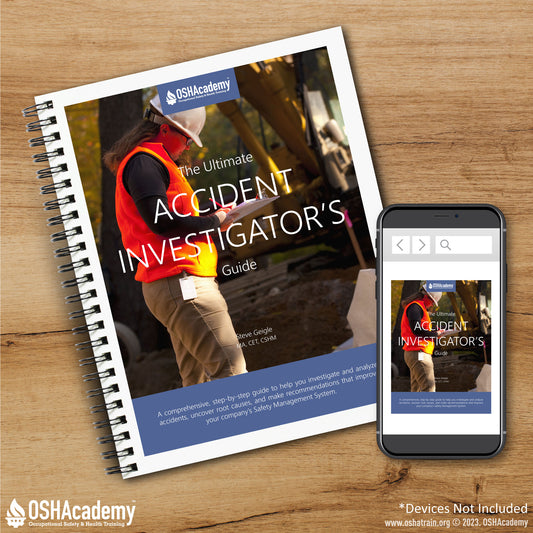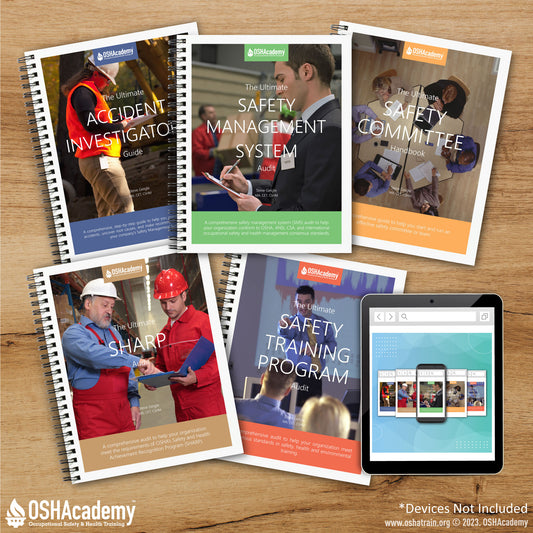
Responding to Bloodborne Pathogen Incidents at Work
Share
In workplaces where bloodborne pathogens are a risk, accidents involving sharps, spills, and splashes can happen in an instant—but the consequences can be serious and long-lasting. Whether you're in a hospital, dental office, school, tattoo studio, or part of a custodial team, exposure to blood or other potentially infectious materials (OPIM) can lead to severe health outcomes. Bloodborne pathogens such as hepatitis B (HBV), hepatitis C (HCV), and human immunodeficiency virus (HIV) are all transmitted through infected blood, and without proper response and training, a single exposure can change a life forever.
When Exposure Happens, Every Second Counts
One of the most common and dangerous types of exposure is a needlestick injury—often caused by improper sharps disposal or unsafe handling. These injuries frequently occur during rushed procedures or when workers try to recap needles, a practice that increases risk. Spills of blood or body fluids, along with splashes to mucous membranes or open skin, can also pose serious threats. The problem is that many workers freeze in the moment or underestimate the danger. When quick action is delayed, the risk of infection grows—and that’s why knowing what to do ahead of time is so important.
Knowledge Prevents Panic
In the crucial moments following exposure, a clear and confident response can make all the difference. The right steps—washing the affected area, flushing eyes or skin if needed, reporting the incident promptly, and seeking medical evaluation—can greatly reduce the likelihood of disease transmission. But if workers don’t know what to do or second-guess themselves, valuable time is lost. Ongoing, practical training helps remove that uncertainty. When people are well-informed, they’re more likely to act quickly, follow protocols, and avoid panic. That kind of readiness only comes from consistent, scenario-based safety education.
Train to Stay Safe
If your job involves exposure to blood or sharps, OSHAcademy’s course 181 Healthcare: Sharps Safety offers practical, online training that prepares you for real-world situations. You’ll learn how to recognize risks, prevent incidents, and take action when it counts.




6 comments
Thanks, Ms. Geigle;
Ihave completed the Bloodborne Pathogens as a component of the Management Curriculum; however, if there are any additional programs of similar content that will build on that Module, please let me know.
Additionally, I COMPLETED SEVERAL OTHER PROGRAMS on my Dashboard I did not purchase, and would like to know if I COULD PURCHASE THE CERTIFICATIONS, or be required to re-do them (one being Oil Reclamation).
The OSHACADEMY program certifications have opened many potential avenues since my completion of your courses.
Thanks to both you and Dr. Geigle.
Thanks, Ms. Geigle;
Ihave completed the Bloodborne Pathogens as a component of the Management Curriculum; however, if there are any additional programs of similar content that will build on that Module, please let me know.
Additionally, I COMPLETED SEVERAL OTHER PROGRAMS on my Dashboard I did not purchase, and would like to know if I COULD PURCHASE THE CERTIFICATIONS, or be required to re-do them (one being Oil Reclamation).
The OSHACADEMY program certifications have opened many potential avenues since my completion of your courses.
Thanks to both you and Dr. Geigle.
This is good. I am interested in more. Thanks
I love the teachings, I wish to always have more. Than you
Hi I would like to sign up for certifications but let me find out if my employer will pay for these trainings at Honor/Home Instead